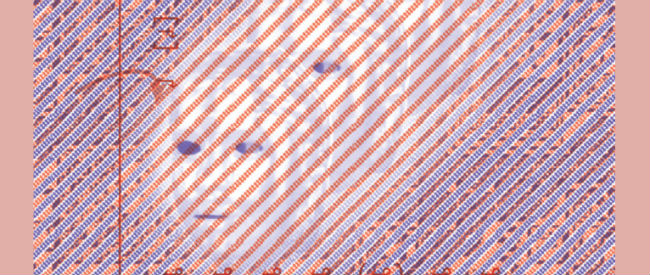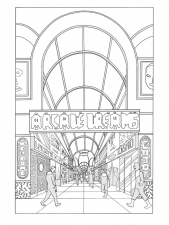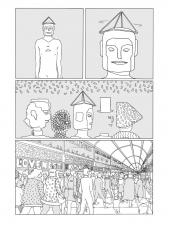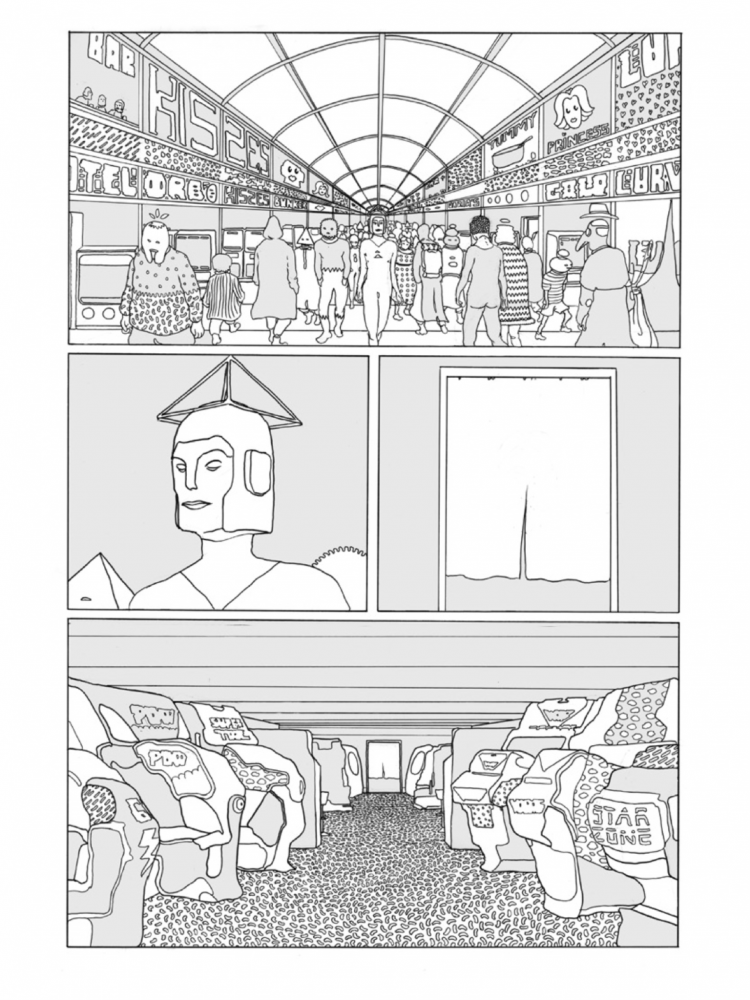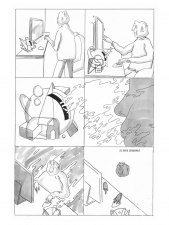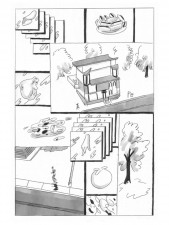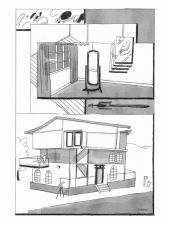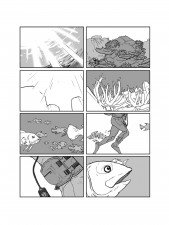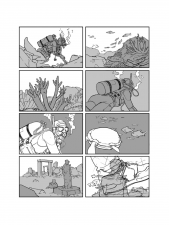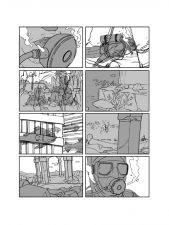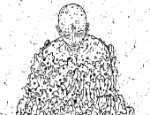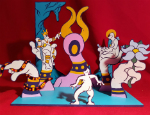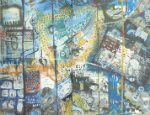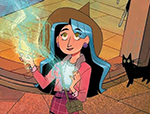A SAFARI FESTIVAL TIE-IN!
As mentioned in their interview with Broken Frontier last week, UK artists Liam Cobb, Tom Kemp and Will Tempest have collaborated to produce an anthology comic, Silica Burn, to be released at the Safari Festival, being held in east London this Saturday.
The three stories fit together very well, sharing near-future visions of how technology might affect our sense of identity; in their treatment of that theme, they’re slightly reminiscent of the TV series Black Mirror, but given a distinctive graphic twist. More specifically, as the creators highlighted in their interview, the stories each address the idea of ‘interfacing’, through interruption or intervention in the comics form.
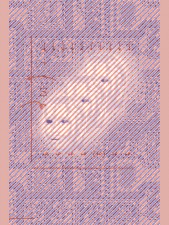 The cover of the comic, with three blank masks depicted against a squall of graphic clutter, highlights the intriguing theoretical territory that underpins these narratives. Using the ancient but enduring symbol of the mask, it’s immediately suggestive of how technology is increasingly enabling us to rewrite even the most fundamental elements of one’s identity.
The cover of the comic, with three blank masks depicted against a squall of graphic clutter, highlights the intriguing theoretical territory that underpins these narratives. Using the ancient but enduring symbol of the mask, it’s immediately suggestive of how technology is increasingly enabling us to rewrite even the most fundamental elements of one’s identity.
The first story, ‘Arcade Dreams’ by Liam Cobb, immediately raises questions over the nature of its ‘reality’; its world is depicted with a geometric precision reminiscent of old-school visions of ‘cyberspace’, while the strangeness of the characters who inhabit the world also suggests that they could be some sort of online avatars.
The story then goes down another layer when its unnamed protagonist, in the arcade that gives the story its title, plugs into a virtual reality machine that enables him/her to live through the Disneyfied version of the Cinderella story. Cobb’s intriguing visual approach captures the uneasy disorientation of the transition between the layers of experience.
The use of Cinderella is a very neat choice, drawing parallels between the Fairy Godmother and the transformational opportunities offered to us by technology – the way we can modify our virtual persona into a ‘cyborg’ form we’re happy with, beyond the constraints of our bodies. In its culminating image of desire frustrated by a lack of credit, the story wraps up with a nice little irony, highlighting the commodification of emotions and contact.
‘Monk Mode’, by Tom Kemp, is a denser and slightly more mysterious story, about an individual who acts as a sort of virtual housesitter for a building and its inhabitants. Again, though, the levels of reality aren’t clearly delineated.
The humanoid inhabitants seem to be some form of artificial life created to keep the building inhabited for administrative purposes, but I don’t think it’s ever 100% clear if the house is a Sims-style virtual environment or a real space. The situation is further obscured by the mysterious smoke-emitting artifact by the narrator’s computer, which – through Kemp’s mutable art – hints at a kind of narcotic effect.
As much as anything else, we focus on the narrator’s reflection on his God-like role, and in particular his adherence to a regimented programme of self-improvement (the ‘Monk Mode’ of the title), which he also tries to project onto his wards. When a threat finally violates the house, at the climax of the story, it highlights our ultimate vulnerability to outside forces, both physical and virtual.
The final story, ‘Phantom Limb’ by Will Tempest, is in some ways the most straightforward of the three narratives (after an appropriately disorienting opening sequence).
It’s another near-future tale, this time in a world where prosthetic enhancement has become commonplace. However, the final page uses a potent and fitting image to illustrate that for everything we might gain from that kind of augmentation, we might lose something too.
Tempest’s artwork is lovely and crisp, with a regular eight-panel grid (familiar to anyone who’s read the entries to the Comics Workbook Composition Competition) giving it an emphatic rhythm.
The opening sequence uses the comics form particularly well. The dream of freedom offered to a diver by the silent underwater world is gradually impinged upon by images of the ‘real’ world, until the combination of the two becomes an unpleasant visually ‘cacophony’.
The three stories, ranging from 13 to 18 pages, each offer an intriguing and individual vision of a possible future. They avoid Twilight Zone-style twists to weave a dense graphic depiction of a complex technological future that brings pros and cons – a depiction that warrants multiple readings.
If you can’t make it to the Safari Festival, Silica Burn will be available online in the very near future. Watch this space (and the websites of its creators: Liam Cobb, Tom Kemp and Will Tempest).





